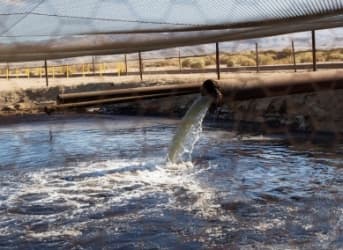As shale plays in the US boom and bust – the rig count is down again – one thing remains relatively unchanged: fracking is a dirty business. That doesn’t mean it can’t improve, however. Low prices have put pressure on the rapid development of tertiary, or enhanced, recovery methods, but greener, more environmentally friendly innovations could soon pay dividends.
Water is the problem, and the scope is huge. Not water in general – on a gallon/MMBtu basis, water consumption for hydraulic fracturing actually ranks below both coal and ethanol production. Instead, what’s left is the issue.
Geology is key, but a typical US wellhead will require more than 3.5 million gallons of water per frack. Up to 60 percent of that water will return from the well as wastewater, or flowback. Last year, roughly 18,200 wells were fracked across the US, leaving tens, possibly hundreds, of billions of gallons of flowback for depuration or disposal.
Managing the flowback and overall water life-cycle is easily a billion dollar business and the process can take several forms. In Montana, North Dakota, and Texas – home to the Bakken, Barnett Shale, Eagle Ford, and Permian Basin formations – nearly 50 percent of all wastewater is stored in surface ponds, where it remains until proper disposal is arranged or it evaporates. Regulations are tightening however, and surface ponds remain a short-term and expensive option with little upside. Related: How Debt Has Caught Up With U.S. Shale
A more permanent solution is deep-well injection, but it’s far from perfect. There are approximately 144,000 oil and gas injection wells in the US with a total capacity to deposit more than 2 billion gallons of briny flowback every day. Over the life of a 20-year hydraulic fracturing well, deep-well injection – including trucking, labor, and water disposal – is estimated to cost $160 million. That figure, more than any uptick in injection-related seismic activity or environmental concern, is driving the search for a more cost-effective disposal and/or remediation solution.
Broadly, the goal is to centralize – or integrate on-site – facilities for the treatment and reuse of wastewater. While a truly viable – and rapidly scalable – solution is not yet at hand, there are several contenders that suggest a breakthrough is just around the corner.
Engineers at the University of Colorado Boulder have developed a new water treatment technique that is appealing to drillers and environmentalists alike. The technology, dubbed microbial capacitive desalination, is in essence a battery – a battery that removes both hydrocarbon contaminants and salt present in the flowback.
First, microbes are introduced into the wastewater, which feed on the organic contaminants and release their inherent energy. The energy is then used to create an electric current between positively and negatively charged electrodes. Once live, the electrodes attract the dissolved salt, trapping it on their surface. It does not end there, however. Besides preparing the wastewater for reuse, the battery also creates a surplus of energy that could be used to run equipment on site. Traditional treatment methods are net users of electricity and not providers. Related: Three Reasons Why US Shale Isn’t Going Anywhere
The technology, organized under the company BioElectric Inc. joins similar innovations – electrocoagulation and electrodialysis to name a few – out of OriginOil, MIT, and a quickly growing number of research organizations around the world. The bigger industry players are also answering the call – Halliburton offers both electric and chemical flowback treatments, and General Electric has long been perfecting its on-site membrane distillation treatment.
So, why aren’t these procedures widespread? In a cost comparison analysis, electrodialysis, induced air flotation, and microbial methods ranked last behind traditional disposal techniques like storage ponds, shallow- and deep-well injection, and commercial removal, despite favorable estimated costs per barrel.
It’s promising work, but capex hurdles still loom too large. Barring stiffer EPA mandates, legacy equipment and long-established practices will continue to spurn the cutting edge.
By Colin Chilcoat of Oilprice.com
More Top Reads From Oilprice.com:
- Will US Shale Boom Continue Or Have A Hiatus?
- The Courts Just Struck Down These Critical Shale Lawsuits
- Will Texas Survive The Downturn?


















